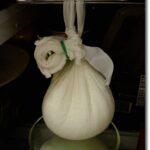Fermentation is an ancient food preservation technique that has been used for thousands of years to preserve food and enhance its flavor and nutritional value. Today, fermentation continues to be a popular food trend as people are becoming more interested in the health benefits of fermented foods. In this comprehensive fermentation for beginners guide, we will explore the basics of fermentation, the types of fermentation, and the benefits of incorporating fermented foods into your diet.
Guide to Fermentation for Beginners
What is Fermentation?

Fermentation is a natural process that involves the conversion of carbohydrates into alcohol or organic acids. This process is facilitated by microorganisms, such as yeasts, bacteria, and fungi, which break down the sugars in food into simpler compounds. During this process, the microorganisms release carbon dioxide, which causes the food to rise and form bubbles. Additionally, the release of lactic acid helps to preserve the food and gives it a sour, tangy flavor.
Types of Fermentation
There are several types of fermentation, each with its own unique characteristics and benefits. Here are a few of the most common types of fermentation:
- Lactic Acid Fermentation: This type of fermentation is commonly used to preserve dairy products, such as yogurt and cheese. Lactic acid fermentation is also used to preserve vegetables, such as sauerkraut and pickles.
- Alcoholic Fermentation: This type of fermentation is used to produce alcoholic beverages, such as beer, wine, and spirits. Alcoholic fermentation is a two-step process that involves the conversion of carbohydrates into alcohol and carbon dioxide.
- Acetic Acid Fermentation: This type of fermentation is used to produce vinegar. During acetic acid fermentation, bacteria convert alcohol into acetic acid.
Benefits of Fermented Foods
Fermented foods are a rich source of probiotics, which are beneficial bacteria that live in the gut and help to maintain a healthy gut microbiome. Consuming fermented foods regularly can help to boost the immune system, improve digestion, and support overall gut health. Fermented foods are also rich in vitamins and minerals, such as vitamin K and B vitamins, which are essential for good health.
Additionally, fermented foods are often easier to digest than their unfermented counterparts, making them a great option for people who have trouble digesting certain foods. They are also a great source of natural enzymes, which can help to improve digestive function and support the digestive process.
Getting Started with Fermentation
If you’re new to fermentation, it’s easy to get started. All you need is a few basic ingredients, such as salt, water, and a little bit of time. Here are a few simple fermentation recipes that you can try at home:
- Sauerkraut: To make sauerkraut, simply shred cabbage and mix it with salt. Place the cabbage in a jar, cover it with water, and let it ferment for several days or up to a week.
- Kombucha: To make kombucha, you’ll need a kombucha starter culture, tea, sugar, and water. Simply brew a batch of tea, add the sugar, and then add the kombucha starter culture. Let the mixture ferment for several days, and then enjoy your homemade kombucha.
- Yogurt: To make yogurt, heat milk until it reaches a temperature of around 110°F, then add a starter culture. Incubate the mixture for several hours, and then chill the yogurt in the refrigerator.
Fermentation is a fascinating and rewarding process that offers numerous health benefits.
Keywords: fermentation for beginners, guide for fermentation for beginners, tips for fermentation for beginners, fermentation for beginners guide, step-by-step fermentation for beginners, fermentation for beginners guide for fermenting
Check out our Novel Writing Workbooks
Check out Little Tree Food Forest for articles on food forests and homesteading.
Check out FoodieScapes for articles on growing, fermenting and preserving food
Check out StoryScapes.World for articles on writing.
Related Content
Related Content
Subscribe to our newsletter to get information delivered to your inbox on edible landscaping, growing food and medicinal plants, growing mushrooms, foraging, fermentation, food preservation, raising small livestock, and more.







